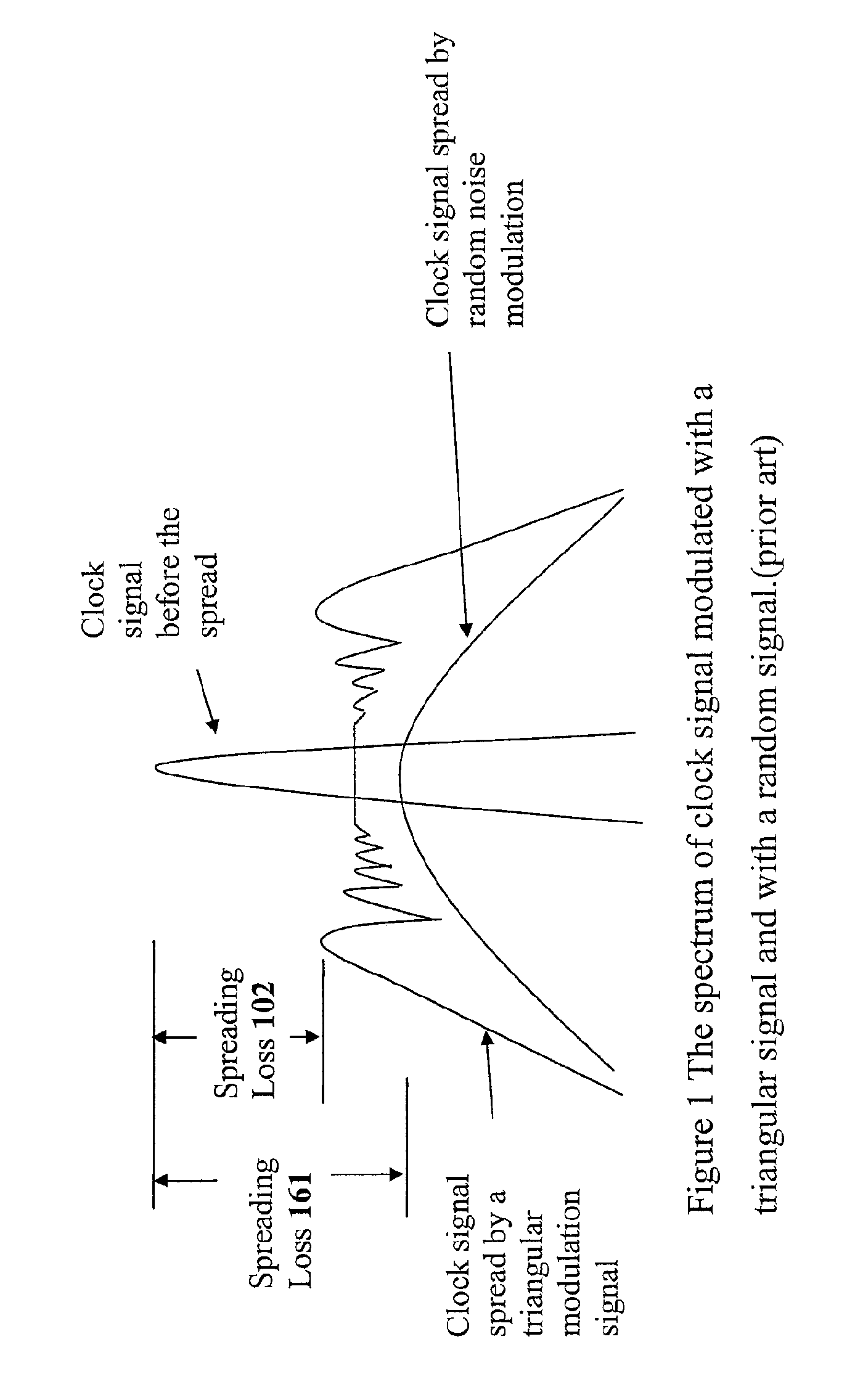Spread spectrum clock generator using arrival locked loop technology
a technology of arrival lock loop and spread spectrum clock, which is applied in the direction of pulse automatic control, pulse generation with predetermined statistical distribution, oscillation comparator circuit, etc. it can solve the problem of not being able to pump the detector's output up regularly to reach the peak power of the clock signal, and it is difficult to implement a spread spectrum clock system inside an ic with random noise modulation signals. the effect of large hardware investment and easy change of the amount of peak-to-peak frequency spread
- Summary
- Abstract
- Description
- Claims
- Application Information
AI Technical Summary
Benefits of technology
Problems solved by technology
Method used
Image
Examples
Embodiment Construction
[0031]A nonlinear feedback control loop 150 as shown in FIG. 2 becomes a spread spectrum clock generator since the nonlinear error comparator 118 inevitably produces incorrect decisions due to the inherent loop delay; when the nonlinear error comparator 118 produces as many correct decisions as the incorrect decisions, the nonlinear feedback control loop 150 will oscillate and the oscillation of the loop is modulated by the random noise around the decision threshold of the nonlinear error comparator 118 since a small noise perturbation around the decision threshold can change the outcomes of the nonlinear error comparator 118.
[0032]Once the nonlinear error comparator 118 produces an output, the output will remain at the same state until a new output state is produced at the end of next comparison cycle. As a result, the nonlinear error comparator 118 can only produce a digital H or L output state for the final error correction output 115 regardless of how small the error input signa...
PUM
 Login to View More
Login to View More Abstract
Description
Claims
Application Information
 Login to View More
Login to View More - R&D
- Intellectual Property
- Life Sciences
- Materials
- Tech Scout
- Unparalleled Data Quality
- Higher Quality Content
- 60% Fewer Hallucinations
Browse by: Latest US Patents, China's latest patents, Technical Efficacy Thesaurus, Application Domain, Technology Topic, Popular Technical Reports.
© 2025 PatSnap. All rights reserved.Legal|Privacy policy|Modern Slavery Act Transparency Statement|Sitemap|About US| Contact US: help@patsnap.com



